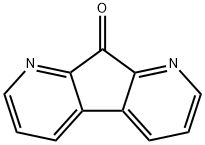Uses of 1,8-Diazafluoren-9-one
Oct 25,2019
1,8-Diazafluoren-9-one(C11H6N2O,182.18 g/moL), also known as DFO, is a chemical that is used to find fingerprints on porous surfaces. It makes fingerprints glow when they are lit by blue-green light. DFO reacts with amino acids present in the fingerprint to form highly fluorescent derivatives. Excitation with light at ~470 nm results in emission at ~570 nm. 1,8-Diazafluoren-9-one(DFO) is a ninhydrin analog used for developing latent prints on porous surfaces. Its fluorochrome properties make it especially useful on multicolored surfaces where the background would interfere with subsequent photography. DFO reacts with the amino acid content of fingerprint residue, and it will not interfere with subsequent analysis using ninhydrin, silver nitrate or physical developer. In fact, some labs report that 1,8-Diazafluoren-9-one use improves the results gained with ninhydrin. According to the “Manual of Fingerprint Development Techniques” published by the Police Scientific Development Branch of the British Home Office, 1,8-Diazafluoren-9-one(DFO) will develop more fingerprints than ninhydrin.
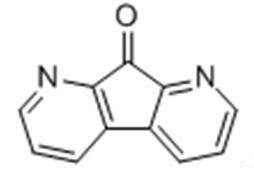
Testing in the U.S. indicates that 1,8-Diazafluoren-9-one will develop 21/2 times as many prints as ninhydrin. Other testing indicates that it is also effective for developing latent blood prints. On occasion, DFO will produce lightly colored (pink) latent prints, but its real strength is in its fluorescent properties. 1,8-Diazafluoren-9-one fluorescence may be produced using ultraviolet light, blue light and other alternative light sources. DFO is now packaged in a pump spray which contains 100mL of pre-mixed reagent for better control and less waste. 1,8-Diazafluoren-9-one in crystal form is available for those labs preparing their own formulations[1]. DFO is a fluorescent detection Reagent used for analysis of amino acid and peptide.
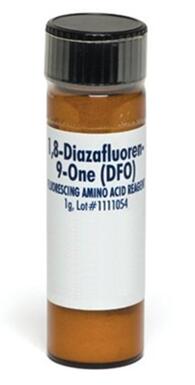
In recent year, 1,8-Diazafluoren-9-one(DFO) obtained extensive application in forensic fingerprint detection. 1,8-Diazafluoren-9-one belongs to the large class of molecules (aromatic ketones) containing heteroatoms (nitrogen and oxygen) in its structure. This compound was synthesized for the first time in 1950, and in the late eighties of the last century was used in forensic investigations to detect latent fingerprints[2]. 1,8-Diazafluoren-9-one reacts with amino acids contained in the natural secretions to produce a red-coloured complex which is highly fluorescent at room temperature under green light[3].
References
[1] Pounds C A , Grigg R , Mongkolaussavaratana T . The Use of 1,8-Diazafluoren-9-one (1,8-Diazafluoren-9-one(DFO)) for the Fluorescent Detection of Latent Fingerprints on Paper. A Preliminary Evaluation[J]. Journal of Forensic Sciences, 1990, 35(1):169-175.
[2] R. Grigg, T. Mangkolaussavarantana, C.A. Pounds, S. Sivagnanam Tetrahedron Lett., 31 (1990), pp. 7215-7218.
[3] Wilkinson D . Study of the reaction mechanism of 1,8-diazafluoren-9-one with the amino acid, l-alanine[J]. Forensic Science International, 2000, 109(2):87-103.
- Related articles
- Related Qustion
L-histidine is a conditionally essential amino acid, so-called because adults generally produce adequate amounts of the substance but children quite often do not and must fill their needs through diet.....
Oct 24,2019Biochemical EngineeringDodecylamine is most commonly used collector in the flotation separation of muscovite from gangue minerals such as quartz and feldspar.....
Oct 25,2019Catalyst and Auxiliary1,8-Diazafluoran-9-one
54078-29-4You may like
- Benzhydrol:Melting point,Uses,Hazards
Mar 22, 2024
- What is Methoxypolyethylene glycol amine used for?
Mar 14, 2024
- What is 1,2-Dioleoyl-sn-glycero-3-phosphoethanolamine?
Mar 14, 2024
1,8-Diazafluoran-9-one manufacturers
- 1,8-Diazafluoran-9-one
-
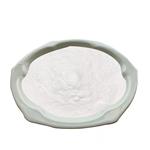
- $0.00 / 1kg
- 2023-12-18
- CAS:54078-29-4
- Min. Order: 1kg
- Purity: 99.9%
- Supply Ability: 30000 Kg
- 1,8-Diazafluoran-9-one
-
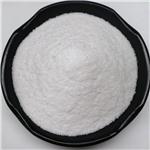
- $35.00/ kg
- 2023-10-12
- CAS:54078-29-4
- Min. Order: 1kg
- Purity: 99%
- Supply Ability: 20 Ton
- 1,8-Diazafluoran-9-one
-

- $0.00 / 1g
- 2021-07-10
- CAS:54078-29-4
- Min. Order: 10g
- Purity: 98%
- Supply Ability: >10kg




